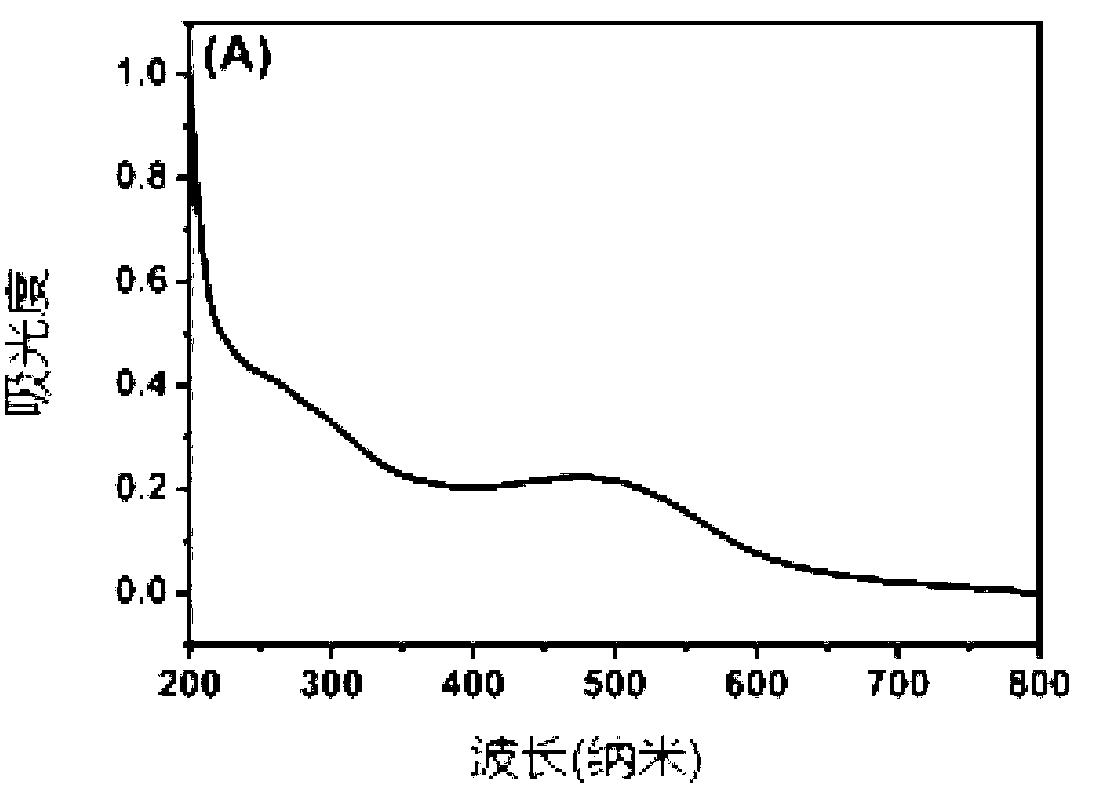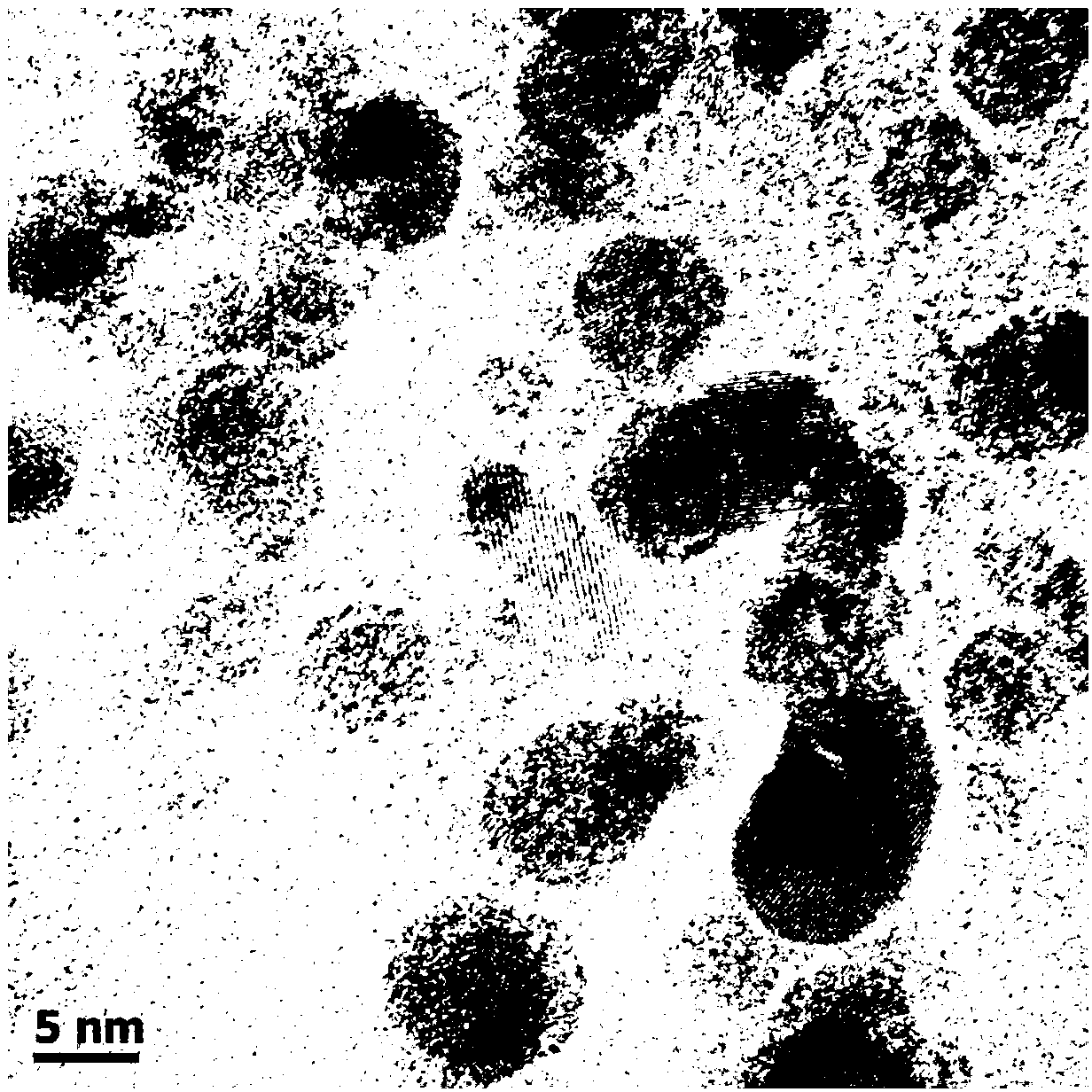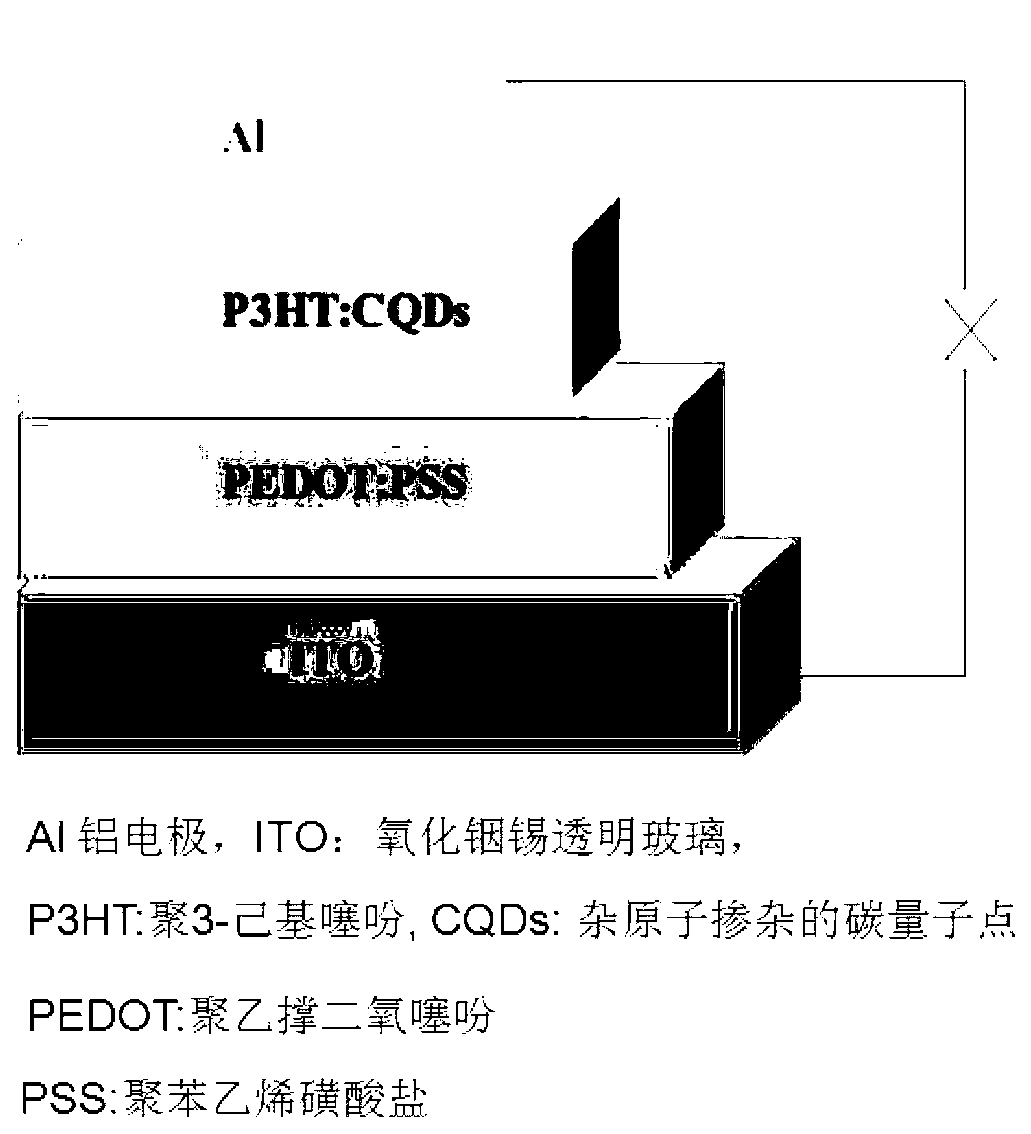Application of heteroatom doped carbon quantum dot in solar cell
A technology of solar cells and carbon quantum dots, which is applied in the application field of heteroatom-doped carbon quantum dots in solar cells, can solve the problems that the photoelectric conversion efficiency cannot meet the needs of practical applications, and achieve high photoelectric conversion efficiency and absorption The effect of spectral broadness
- Summary
- Abstract
- Description
- Claims
- Application Information
AI Technical Summary
Problems solved by technology
Method used
Image
Examples
Embodiment 1
[0040] A preparation method of carbon quantum dots doped with N and P diatoms, comprising the following steps:
[0041] Put 10mg of polymer PPV1 solid powder into a beaker, add 40mL of 0.5M hydrochloric acid aqueous solution, and mix well; transfer the well-mixed reaction solution into a hydrothermal reactor, control the reaction temperature at 250°C, and the reaction time for 12 hours. After cooling Separating and purifying to obtain carbon quantum dots doped with N and P double atoms.
[0042] The above-mentioned N, P diatomic doped carbon quantum dots are used as new electron acceptor / donor materials to construct organic polymer solar cells: the conductive polymer polyethylenedioxythiophene (PEDOT) and polystyrene sulfonate (PSS) was mixed according to the weight ratio of 1:25, and spin-coated on indium tin oxide (ITO) transparent glass with a thickness of about 30 nm as a hole transport auxiliary layer. Poly 3-hexylthiophene (P3HT) and N, S double-atom doped carbon quantu...
Embodiment 2
[0046] A preparation method of carbon quantum dots doped with S and N diatoms, comprising the following steps:
[0047] Put 10mg of polymer PT1 solid powder into a beaker, add 40mL of 5M aqueous sulfuric acid solution, and mix well; transfer the well-mixed reaction solution into a microwave reactor, control the reaction temperature at 150°C, and the reaction time for 12 hours, separate and purify after cooling , to obtain carbon quantum dots doped with S and N diatoms
[0048] The above-mentioned S, N diatomically doped carbon quantum dots are used as new electron acceptor / donor materials to construct organic polymer solar cells: the conductive polymer polyethylenedioxythiophene (PEDOT) and polystyrene sulfonate (PSS) was mixed according to the weight ratio of 1:25, and spin-coated on indium tin oxide (ITO) transparent glass with a thickness of about 30 nm as a hole transport auxiliary layer. Poly C 60 PCBM and S, N diatomically doped carbon quantum dots are dissolved in chl...
Embodiment 3
[0052] A preparation method of Se, N double-atom-doped carbon quantum dots, comprising the following steps:
[0053] Put 5 mg of polymer PT2 solid powder into a beaker, add 40 mL of 1M potassium hydroxide aqueous solution, and mix well; transfer the well-mixed reaction liquid into an ultrasonic reactor, control the reaction temperature at 250 ° C, and the reaction time is 36 hours. After cooling Separating and purifying to obtain Se and N double-atom-doped carbon quantum dots. The above-mentioned Se, N diatomically doped carbon quantum dots are used as new electron acceptor / donor materials to construct organic polymer solar cells: the conductive polymer polyethylenedioxythiophene (PEDOT) and polystyrene sulfonate (PSS) was mixed according to the weight ratio of 1:25, and spin-coated on indium tin oxide (ITO) transparent glass with a thickness of about 30 nm as a hole transport auxiliary layer. Poly 3-hexylthiophene (P3HT) and Se, N diatomically doped carbon quantum dots were ...
PUM
| Property | Measurement | Unit |
|---|---|---|
| Thickness | aaaaa | aaaaa |
| Thickness | aaaaa | aaaaa |
Abstract
Description
Claims
Application Information
 Login to View More
Login to View More - Generate Ideas
- Intellectual Property
- Life Sciences
- Materials
- Tech Scout
- Unparalleled Data Quality
- Higher Quality Content
- 60% Fewer Hallucinations
Browse by: Latest US Patents, China's latest patents, Technical Efficacy Thesaurus, Application Domain, Technology Topic, Popular Technical Reports.
© 2025 PatSnap. All rights reserved.Legal|Privacy policy|Modern Slavery Act Transparency Statement|Sitemap|About US| Contact US: help@patsnap.com



